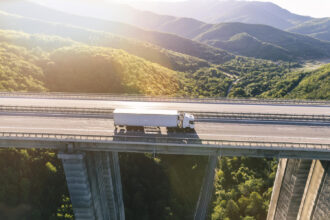Understanding Weighbridge Systems – What They Do, Why They Matter, and How to Get Them Right


What’s the actual weight of that fully-loaded lorry? You’d be surprised how crucial it is to know the answer with absolute accuracy. From transport and construction to waste management and agriculture, getting that weight spot on isn’t just about logistics. It’s about safety, compliance, efficiency, and protecting your bottom line.
That’s where weighbridge systems come in.
Used across a range of industries, weighbridges allow businesses to measure the weight of large vehicles, often fully laden. But there’s more to it than just rolling onto a platform and getting a number. The right system, in the right place, used in the right way, can save serious time and money.
Table of Contents
What Is a Weighbridge?
A weighbridge is essentially a large set of scales built into the road surface or mounted on top of it. Vehicles drive onto it, and the weight is recorded – either the gross weight of the vehicle, or more detailed readings like axle weight, depending on the setup.
There are a few key components involved:
- Weighing platform – The flat surface the vehicle sits on
- Load cells – Sensors that sit beneath the platform and measure the weight
- Terminal or display – Shows the weight, and may link to back-end systems for data recording
- Software integration – Optional, but increasingly common for businesses that want full digital records
Some systems are designed for permanent use, and others are portable. Some weighbridges are above ground, while others are pit-mounted for ground-level access.
Why Businesses Use Weighbridge Systems
The obvious reason is to know how much something weighs. But dig a little deeper and you’ll see the wider benefits.
Compliance with the law
There are strict limits on how much commercial vehicles can carry. Overloading a vehicle doesn’t just risk fines – it’s a serious safety hazard. Weighbridges make it easier to meet these legal obligations and provide proof if needed.
Operational efficiency
Knowing your vehicle’s weight can help with planning loads, reducing fuel use, and maximising capacity without exceeding limits. In industries that deal with bulk materials, this can make a big difference to profit margins.
Accurate billing
In many sectors, charges are based on weight. Whether it’s waste disposal, material supply, or product deliveries, weighbridges allow businesses to charge accurately and transparently.
Stock and inventory management
Bulk goods like grain, sand, or scrap metal don’t come in neat packages. Weighing vehicles in and out lets you track how much has been loaded or delivered.
Fixed or Portable? Understanding the Options
Weighbridge systems are not one-size-fits-all. One of the first things to consider is whether you need a fixed or portable setup.
Fixed weighbridges are installed on-site and built for long-term use. They’re ideal for high-volume locations like distribution centres or recycling plants where vehicles are being weighed regularly, often several times a day.
Portable weighbridges are quicker to install and can be moved to different locations. These are a better fit for temporary worksites or where operations move around – think construction sites or seasonal agricultural work.
Each option has trade-offs. Fixed systems are more durable and stable, but they take longer to install and need more groundwork. Portable systems offer flexibility but may have lower capacity or require more careful positioning for accuracy.
Pit vs Surface Mounted
Another major decision is the type of installation. Do you go for a pit-mounted system that sits flush with the ground or a surface-mounted one that’s raised above it?
Pit-mounted
These are level with the road and require vehicles to drive straight on. They’re useful where space is tight or where access needs to be from multiple directions. However, installation is more complex and expensive, involving excavation and drainage considerations.
Surface-mounted
These sit above ground with ramps for access. They’re quicker and cheaper to install, easier to maintain, and generally suitable where space allows. But they do need more room for the ramps and turning space.
Things to Consider Before You Install One
A weighbridge is a serious investment. It’s worth thinking through a few key factors before you commit:
- Volume of traffic
How many vehicles do you expect to weigh each day? A busy site will need a more robust system, possibly with automation or software integration to speed things up. - Site conditions
Space, ground conditions, drainage, and vehicle flow all play a role. Poor planning at this stage can create headaches later. - Power supply and connectivity
If you’re planning to link the weighbridge to digital systems or remote monitoring, you’ll need reliable power and network access. - Environmental exposure
Is the weighbridge going to be exposed to dirt, water, or extreme weather? You may need additional protection or regular maintenance to keep readings accurate. - Legal requirements
If you’re using weighbridge data for trading (i.e. charging customers based on weight), the system needs to be trade-approved and calibrated to specific standards.
Think Long Term, Not Just Short Term
A weighbridge isn’t a small purchase, so it’s worth taking a step back and looking beyond the initial cost. The right system will likely pay for itself through better load management, lower risk of fines, fewer delays, and better data for decisions.
It’s not just a scale. It’s a tool that connects operations, compliance, and cost control, and when chosen well, it can make a serious difference.






